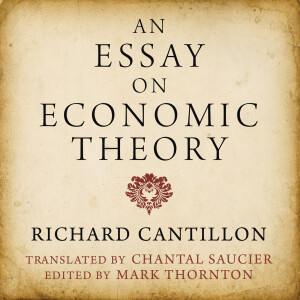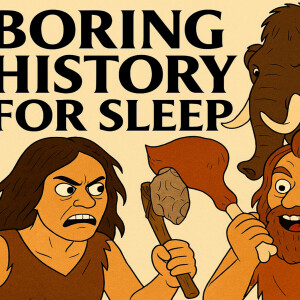

An Essay on Economic Theory
https://mises.org/podcast-feed/127189Episode List

1.8. Some Artisans Earn More, Others Less, According to the Different Cases and Circumstances
In addition to training and the forces of supply and demand, workers with higher quality skills, risky jobs, or jobs which require trustworthy employees will receive higher wages. This is now known as the theory of compensating differentials that is often attributed to Adam Smith.From Part 1: Production, Distribution, and Consumption. Narrated by Millian Quinteros.

3.5. The Augmentation and Diminution of the Denomination of Money
Raising and lowering the nominal value of money is shown not to undermine the theory of the value of money. In contrast, such measures are shown to be methods by which the prince acquires resources by deceiving individuals about the value of money. The process causes chaos in the market.From Part 3: International Trade and Business Cycles. Narrated by Millian Quinteros.

3.7. Further Explanations and Enquiries as to the Utility of a National Bank
National Banks are of little utility and can be the source of economic chaos. The increase in the supply of money that they provide is relatively small and offers the same disadvantages as increases in real money. They are therefore unnecessary and potentially very harmful, as in the cases of the Bank of Venice and the Bank of London. The roles of legal tender laws, fractional reserve banking, and regional trade fairs are described.From Part 3: International Trade and Business Cycles. Narrated by Millian Quinteros.

3.1. Foreign Trade
Here the circular-flow economy is extended to international trade. Instead of barter or exchange with money, Cantillon explains how international trade takes place on the basis of bills of exchange. He showsthat a state which accumulates money will enjoy a temporary gain in international trade, but that states where manufacturing industries develop will enjoy a higher standard of living. The only clear exception Cantillon makes to free trade is his famous endorsement of the English Navigation Acts, where domestic shipping is protected, not in its own right, but to provide ships and sailors during wartime.From Part 3: International Trade and Business Cycles. Narrated by Millian Quinteros.

3.3. Further Explanations on the Nature of Exchanges
Exchange rates are explained as a function of the balance of trade and other factors. A trade deficit can cause your money to exchange below par, while a trade surplus will cause it to exchange above par. In fact, the exchange rate, above and below par, is an indicator of the general balance of trade in a country. An attempt to prohibit the export of gold necessary to pay for deficits only hurts the economy.From Part 3: International Trade and Business Cycles. Narrated by Millian Quinteros.
Create Your Podcast In Minutes
- Full-featured podcast site
- Unlimited storage and bandwidth
- Comprehensive podcast stats
- Distribute to Apple Podcasts, Spotify, and more
- Make money with your podcast












